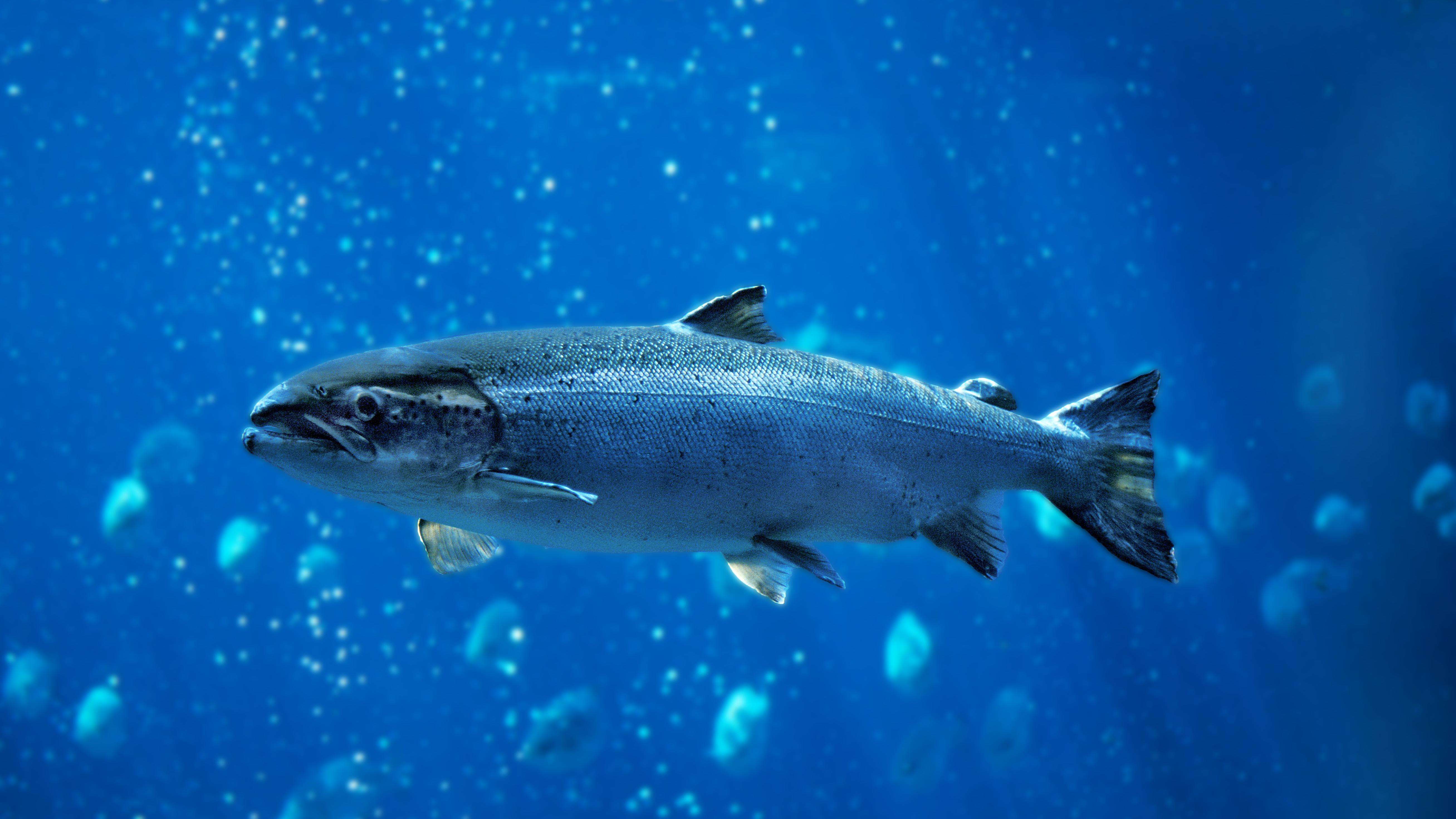Infectious Salmon Anemia

Infectious salmon anemia (ISA) is a serious viral fish disease that affects farmed and wild Atlantic salmon in several areas of the world. APHIS works with fish health partners to help protect U.S. aquaculture and wild fish populations from ISA.
ISA, caused by the infectious salmon anemia virus (ISAV), was found in Maine in 2001. In 2002, Federal and State partners began a successful surveillance and control program to look for ISA and prevent its spread in farmed Atlantic salmon.
ISA-infected fish may show one or more of the following symptoms:
- Pale gills
- Raised scales
- Pinpoint areas of bleeding
- Bloated abdomen
- Bulging eyes
- Swimming close to the surface
In some cases, ISA-infected fish won't show any signs of illness. They maintain a normal appetite and then die suddenly.
Because the signs of ISA can occur with other fish diseases, testing for ISA is the only way to determine if a fish has the disease.
ISA can spread via contact with infected fish and water contaminated with the virus. Biosecurity can help prevent it from infecting aquaculture facilities.
If you're a fish producer, here's what you can do:
- Clean and disinfect equipment between uses.
- Do not share equipment or transfer fish between sites.
- Coordinate stocking of farms in shared waters.
- Quickly remove any potentially sick or dead fish.
- Farm only one age group of fish at a time.
- Control facility access.
- Obtain eggs and brood stock that are tested ISA-free.
- Leave sites empty between production cycles (fallowing).
- Work with other producers to coordinate biosecurity among sites.
- Conduct regular surveillance for disease and report any signs or symptoms.
- Discuss vaccination with your veterinarian.
There is no treatment for ISA. If found on a farm (land-based or in open water), APHIS will work with the farm owner and State authority to respond to the detection. Each response is case specific and may include additional sampling of the affected population, a biosecurity review, and the development of a controlled marketing plan.
Report Signs of Animal Disease
Producers or owners who suspect an animal disease should contact their veterinarian to evaluate the animal or herd. Find an accredited veterinarian.
Animal health professionals (veterinarians; diagnostic laboratories; public health, zoo, or wildlife personnel; and others) report diagnosed or suspected cases of nationally listed reportable animal diseases to APHIS District Offices and to the State animal health official as applicable under State reporting regulations.
Controlling Infectious Salmon Anemia
ISA is detected annually in the United States. A form of the ISA virus (ISAV HPR0) that does not cause disease is more frequently detected in wild and farmed Atlantic salmon in Maine.
Our focus with ISA is early detection and control. This approach best protects the health of farmed and wild fish and reduces the potential for impacts to the aquaculture industry.
Since 2002, APHIS has had a surveillance and control program in place to look for ISA and prevent its spread in farmed Atlantic salmon. The program, a cooperative effort with the State of Maine, has been successful in meeting these goals.
2024
2023
- December (114.13 KB)
- November (114.21 KB)
- October (114.03 KB)
- September (113.77 KB)
- August (113.66 KB)
- July (114.33 KB)
- June (118.8 KB)
- May (114.6 KB)
- April (114.08 KB)
- March (118.93 KB)
- February (118.38 KB)
- January (118.99 KB)
2022
- December (119.06 KB)
- November (117.87 KB)
- October (122.29 KB)
- September (117.75 KB)
- August (112.58 KB)
- July (118.57 KB)
- June (143.4 KB)
- May (143.76 KB)
- April (143.01 KB)
- March (143.48 KB)
- February (143.03 KB)
- January (148.69 KB)
2021
- December (148.77 KB)
- November (153.4 KB)
- October (149.32 KB)
- September (153.1 KB)
- August (152.75 KB)
- July (153.05 KB)
- June (37.71 KB)
- April (142.55 KB)
- March (142.45 KB)
- February (142.01 KB)
- January (142.01 KB)
2020
- December (142.37 KB)
- November (117.88 KB)
- October (118.53 KB)
- September (121.98 KB)
- August (117.46 KB)
- July (119.04 KB)
- June (119.78 KB)
- May (114.75 KB)
- April (17.73 KB)
- March (17.59 KB)
- February (113.15 KB)
- January (17.54 KB)
2019
- December (136.9 KB)
- November (136.93 KB)
- October (17.55 KB)
- September (17.52 KB)
- August (17.61 KB)
- July (17.6 KB)
- June (17.65 KB)
- May (17.58 KB)
- April (17.57 KB)
- March (17.5 KB)
- February (17.59 KB)
- January (17.46 KB)
To request copies of older reports, send an email to aphisweb@usda.gov.

